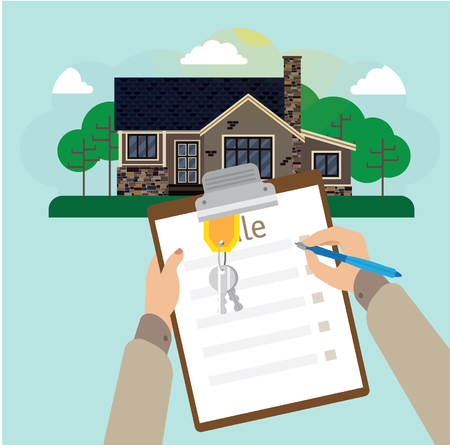1. Identifying High-Demand Markets in the U.S.
If youre looking to maximize your Airbnb income, choosing the right location is key. Not all cities or neighborhoods will offer the same return on investment. Some areas have strong tourism, low competition, and supportive regulations—making them ideal for short-term rentals. In this section, we’ll break down how to find these high-demand markets using easy-to-access tools and data.
What Makes a Market High-Demand?
A high-demand Airbnb market typically includes:
- Consistent tourist traffic or business travelers
- Reasonable property prices compared to nightly rates
- Favorable local short-term rental laws
- Low to moderate competition from other Airbnb hosts
Top Tools to Research Airbnb Markets
Here are some popular tools you can use to analyze potential cities and neighborhoods:
| Tool | Main Features | Why It’s Useful |
|---|---|---|
| AirDNA | Market demand scores, occupancy rates, average daily rates | Provides deep insights into Airbnb performance by city or zip code |
| Mashvisor | Rental income projections, cash-on-cash return, neighborhood analytics | Compares short-term vs. long-term rental profitability |
| Zillow & Realtor.com | Real estate listings, price trends, neighborhood data | Helps you find affordable properties in promising areas |
| Google Trends & TripAdvisor | Search volume trends, top attractions | Gauges travel interest in specific locations over time |
Check Local Laws Before You Invest
No matter how profitable a market looks on paper, always check the local short-term rental regulations. Some cities like New York City and San Francisco have strict rules that limit or ban Airbnb listings. Visit the official city website or call the local housing department to confirm whats allowed.
Things to Look For:
- Do you need a permit or license?
- Are there restrictions on the number of nights per year?
- Is owner-occupancy required?
- Are there zoning restrictions for certain neighborhoods?
Narrowing Down Neighborhoods Within a City
Once youve picked a city with strong potential, zoom in further. Not all parts of a city perform equally well. Use tools like AirDNAs Heatmap or Mashvisors Neighborhood Analytics to compare key factors like:
- Occupancy Rate: Are guests booking regularly?
- Averaged Daily Rate (ADR): How much can you charge per night?
- Seasonality: Are bookings consistent year-round?
- User Reviews: Do guests enjoy staying in this area?
Example: Comparing Two Neighborhoods in Austin, TX Using AirDNA Data*
| Zilker | East Austin | |
|---|---|---|
| Occupancy Rate | 72% | 65% |
| Averaged Daily Rate (ADR) | $210/night | $185/night |
| # of Active Rentals | 340+ | 280+ |
*Data shown is for illustrative purposes only.
Your Next Step as an Investor
The more research you do upfront, the better your chances of picking a location that brings steady returns. Start by shortlisting cities that align with your budget and goals. Then dive deeper into neighborhood-level data before making any purchase decisions.
2. Preparing Your Property for Maximum Appeal
To stand out in the competitive U.S. Airbnb market, your property needs to do more than just look good — it must feel like a home away from home. Creating an inviting space with thoughtful design and amenities can significantly boost your booking rate and nightly price. Here’s how you can prepare your property to attract more guests and increase occupancy.
Interior Design Tips That Win Bookings
Good design doesn’t have to be expensive, but it should be intentional. Stick to a clean, modern aesthetic that appeals to a broad audience. Use neutral tones as your base (like whites, grays, or soft beige), then add pops of color through throw pillows, art, or rugs.
Key Interior Design Elements:
| Design Element | Recommendation |
|---|---|
| Wall Colors | Neutral shades for a clean and spacious feel |
| Lighting | Use layered lighting: ceiling lights, floor lamps, and bedside lamps |
| Furniture | Choose durable, functional pieces; avoid overcrowding the space |
| Decor | Add local artwork or nature-inspired prints for regional charm |
Must-Have Amenities That Guests Love
Amenities can make or break a guest’s experience. While some are expected (like Wi-Fi and clean towels), others can help you stand out from competitors and earn better reviews.
Popular Amenities to Include:
| Amenity | Why It Matters |
|---|---|
| High-speed Wi-Fi | Essential for both leisure and business travelers |
| Coffee Maker & Supplies | Makes mornings easier and adds a personal touch |
| Laundry Machines (Washer/Dryer) | Great for longer stays or families traveling with kids |
| Smart TV with Streaming Services | Keeps guests entertained during their downtime |
| Self Check-In (Smart Lock or Keypad) | Simplifies the arrival process, especially for late check-ins |
Layout Strategies That Maximize Space and Comfort
The way you arrange your rooms can influence how guests feel in your property. Focus on functionality while keeping comfort in mind.
Layout Tips:
- Create Clear Zones: Separate sleeping, lounging, dining, and working areas where possible.
- Add Extra Sleeping Options: A sofa bed or air mattress increases flexibility for larger groups.
- Optimize Storage: Make sure there’s enough closet space or dressers so guests don’t live out of suitcases.
- Avoid Clutter: Keep decor minimal but warm—too many items can overwhelm the space.
A Quick Example of a Guest-Friendly Layout:
| Room | Suggested Features |
|---|---|
| Living Room | Sofa bed, smart TV, coffee table, cozy lighting |
| Bedroom | Queen bed, blackout curtains, nightstands with charging ports |
| Kitchen/Dining Area | Dinnerware for at least four guests, microwave, coffee station |
| Bathroom | Towels, toiletries starter kit, hair dryer, extra toilet paper |
The more thoughtfully you prepare your Airbnb property from design to layout to amenities, the more likely it is that guests will choose your listing over others—and return again in the future.
![]()
3. Pricing Strategies That Optimize Bookings and Profit
Getting your Airbnb pricing right is one of the most important ways to maximize your income as a U.S. real estate investor. If you set your price too high, you risk scaring away potential guests. Too low, and youre leaving money on the table. Let’s break down three key strategies that help keep your listing both competitive and profitable all year long.
Dynamic Pricing: Adjust Rates Based on Demand
Dynamic pricing means adjusting your nightly rates based on current market demand, local events, holidays, and booking trends. Think of it like airline ticket pricing—it changes all the time! There are several tools like PriceLabs, Beyond Pricing, or Wheelhouse that use algorithms to help you automatically update your rates.
Benefits of Dynamic Pricing:
- Increased Occupancy: Lower prices during slow seasons can attract more bookings.
- Higher Profits: Raise prices when demand spikes—like during festivals or big local events.
- Saves Time: Automation means less manual work for you.
Seasonal Adjustments: Plan for Highs and Lows
The U.S. has distinct travel seasons depending on your location. Whether youre near a ski resort in Colorado or a beach town in Florida, knowing when people want to visit helps you optimize rates accordingly.
Example Seasonal Pricing Strategy:
| Season | Description | Pricing Strategy |
|---|---|---|
| High Season (e.g., summer, holidays) | Busiest time with highest demand | Raise nightly rates by 20-40% |
| Shoulder Season (spring, fall) | Moderate demand | Slightly reduce rates to stay competitive |
| Low Season (e.g., winter in non-ski areas) | Lowest travel activity | Add discounts or offer weekly deals to boost occupancy |
Competitor Benchmarking: Stay Ahead of the Game
If similar listings in your area are offering better value at lower prices, guests will book with them instead. Use tools like AirDNA or Mashvisor to research what nearby hosts are charging and how often they’re booked.
Tips for Effective Competitor Benchmarking:
- Aim for Value: Compare amenities, location, and quality before matching or beating their price.
- Track Trends: Watch how competitors change their pricing throughout the year.
- Create Differentiators: If you charge more, make sure it’s clear why—better design, amenities, or service.
Your Takeaway:
The right pricing strategy isn’t just about setting a number—it’s about staying flexible and aware of market conditions. By using dynamic pricing tools, planning for seasonal shifts, and keeping an eye on the competition, youll be able to maintain steady bookings and grow your Airbnb income year-round.
4. Navigating Local Regulations and Compliance
Before listing your property on Airbnb, its essential to understand and follow local laws that govern short-term rentals. These rules vary widely across cities, counties, and even neighborhoods in the U.S. Staying compliant not only helps you avoid fines but also builds trust with guests and neighbors.
Understand City-Specific Rules
Each city has its own approach to regulating short-term rentals. For example, Los Angeles requires hosts to live in the property they rent out, while cities like Austin limit the number of days a property can be rented each year. Always check your local government website or contact the planning department to find up-to-date information.
Short-Term Rental Permits
Many cities require a special permit or license to operate a short-term rental legally. This often includes an application process, a fee, and possibly an inspection.
Examples of Permit Requirements
| City | Permit Required? | Notes |
|---|---|---|
| San Francisco, CA | Yes | Must register as a business and obtain a Short-Term Rental Certificate |
| Nashville, TN | Yes | Separate permits for owner-occupied and non-owner-occupied properties |
| Miami Beach, FL | Yes | Short-term rentals are banned in many residential areas |
Zoning Laws Matter
Zoning laws determine how a property can be used based on its location. Some zones may allow short-term rentals by right, while others prohibit them entirely. Understanding the zoning designation of your property is critical before starting your Airbnb business.
Watch Out for HOA Restrictions
If your property is part of a homeowners association (HOA), review the community bylaws carefully. Many HOAs restrict or outright ban short-term rentals to maintain neighborhood character and reduce traffic or noise complaints.
Tips for Staying Compliant:
- Do Your Research: Visit official city websites and consult legal professionals if needed.
- Register Early: Apply for required licenses or permits before listing your property.
- Stay Updated: Regulations change frequently—subscribe to updates from your local government.
- Communicate Clearly: Let guests know about house rules that align with local ordinances (like quiet hours or parking restrictions).
Navigating regulations might seem overwhelming at first, but taking time to get it right will protect your investment and help you build a sustainable Airbnb business.
5. Creating a Five-Star Guest Experience
If you want to maximize your Airbnb income, creating a five-star guest experience is non-negotiable. Happy guests leave great reviews, and great reviews drive more bookings. Here’s how U.S. real estate investors can consistently deliver top-notch stays that keep guests coming back.
Clear and Friendly Communication
From the moment a guest books your property, communication sets the tone. Respond quickly, be polite, and provide all necessary details before arrival. Use Airbnb’s messaging platform or automated tools to keep guests informed without being overwhelming.
| Stage | What to Communicate | Best Practices |
|---|---|---|
| After Booking | Confirmation, house rules, check-in time | Send a welcome message with clear expectations |
| Day Before Arrival | Check-in instructions, parking info | Include photos or video links for easy navigation |
| During Stay | Availability for support or questions | Respond within an hour to any messages or issues |
| Check-Out Day | Thank-you note, checkout instructions | Kindly remind them to leave a review if they enjoyed their stay |
Smooth and Stress-Free Check-In Process
A smooth check-in builds trust immediately. Whether youre using self-check-in with smart locks or meeting guests in person, make sure the process is easy and reliable.
Tips for Better Check-Ins:
- Self-check-in: Use smart locks or lockboxes with clear instructions.
- In-person check-in: Be punctual and offer a quick tour of the property.
- Visual aids: Share short videos or diagrams showing how to access the home.
- Backup plan: Have a backup key or emergency contact in case of tech failure.
The Power of Cleanliness
A spotless space is one of the most important factors for good reviews. Guests expect hotel-level cleanliness. Hiring a professional cleaner who follows a consistent checklist can make all the difference.
Essential Cleaning Checklist:
- Linen and towels freshly washed and replaced each stay
- Beds neatly made with no visible stains or hair
- Kitchens wiped down, dishes clean, trash removed
- Bathrooms scrubbed and stocked with essentials (toilet paper, soap)
- No dust on surfaces, fans, or baseboards
- No lingering odors—use neutral air fresheners if needed
Reliable Guest Support During Their Stay
Your job doesn’t end after check-in. Being available to help with small issues—like how to use the TV remote or where to find extra towels—can turn an average stay into an excellent one.
Ways to Provide Great Support:
- Create a digital or printed guidebook: Include Wi-Fi info, local dining recommendations, appliance instructions, etc.
- Be responsive: Acknowledge guest messages within an hour whenever possible.
- Troubleshooting list: Prepare answers for common problems like internet outages or thermostat settings.
- Add personal touches: A welcome note or local snacks can go a long way in making guests feel valued.
The goal is simple: make every guest feel like they’re staying in their own private retreat—but with better service. When you focus on communication, convenience, cleanliness, and care, five-star reviews will follow—and so will higher profits.
6. Scaling Your Airbnb Portfolio Sustainably
Once your first Airbnb property is running smoothly and generating steady income, it’s time to think about growing your portfolio. But scaling up isn’t just about buying more properties — it’s about doing it in a smart, sustainable way that doesn’t burn you out or drain your finances. Here’s how U.S. real estate investors can expand their short-term rental business strategically.
Reinvesting Profits for Long-Term Growth
One of the most effective ways to grow your Airbnb portfolio is by reinvesting the profits from your existing rentals. Instead of spending all your earnings, set aside a portion specifically for future investments. This could include saving for down payments, furnishing new units, or covering initial operational costs.
Sample Reinvestment Plan
| Monthly Profit | % Reinvested | Use of Funds |
|---|---|---|
| $2,000 | 50% | Future Property Down Payment |
| $2,000 | 30% | Furniture & Renovations |
| $2,000 | 20% | Emergency/Operating Reserve |
Hiring Professional Management
If you’re managing one or two properties yourself, you know how time-consuming it can be. As your portfolio grows, consider hiring a professional property management company that specializes in short-term rentals. They can handle guest communication, cleaning schedules, pricing optimization, and more — freeing you up to focus on strategy and expansion.
Benefits of Professional Management
- 24/7 guest support without personal involvement
- Higher occupancy rates through dynamic pricing tools
- Consistent property maintenance and reviews
- Scalable systems that grow with your business
Using Financing to Acquire More Properties
You don’t always need to pay cash for every new property. Smart use of financing allows you to stretch your capital and buy more homes. In the U.S., common options include conventional loans, DSCR (Debt Service Coverage Ratio) loans tailored for investors, and even home equity lines of credit (HELOCs) if you already own property.
Financing Options Comparison
| Loan Type | Best For | Key Advantage |
|---|---|---|
| Conventional Loan | Primary or secondary homes with good credit | Lower interest rates and long terms |
| DSCR Loan | Investment properties based on rental income | No personal income verification needed |
| HELOC | Owners with equity in existing properties | Flexible funding source with revolving credit line |
Partnering with Other Investors
If youre short on capital or want to limit your financial exposure, partnerships can be a great way to scale. You might team up with someone who brings funding while you handle operations — or vice versa. Be sure to have clear agreements in place outlining profit splits, responsibilities, and exit strategies.
Tips for Successful Partnerships:
- Create a formal LLC or joint venture agreement
- Clearly define roles and expectations upfront
- Select partners who complement your skills and values
- Use legal counsel to draft contracts and protect interests
Sustainable growth is all about balance — leveraging profits, people, and smart financing to build a thriving Airbnb business across multiple U.S. markets without sacrificing quality or burning out.


